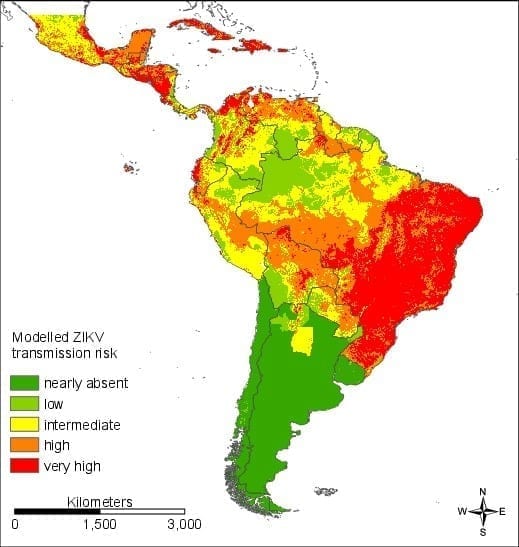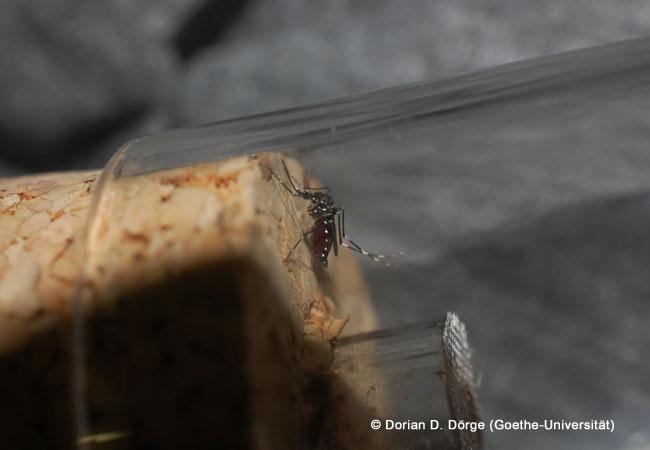In most cases, mosquitoes of the genus Aedes transmit the Zika virus to humans. Primary vectors are the yellow fever mosquito (Aedes aegypti) and the Asian tiger mosquito (Aedes albopictus). Both mosquito species are widespread in South America. Whereas the yellow fever mosquito (Aedes albopictus) is nearly absent in Europe, the Asian tiger mosquito is widespread in the Mediterranean region.
Researchers from Goethe University and the Senckenberg Society for Nature Research in Frankfurt were able to generate reliable maps for the transmission risk of the Zika virus in South America. Based on the models for South America, they will use the method to determine the Zika risk for Europe as well.

To determine the infection risk of a specific area, researchers Dr. Sarah Cunze and Professor Sven Klimpel modelled the potential spread of A. aegypti and A. albopictus. Since the mosquitoes can only transmit the Zika virus in regions where the virus is present in the first place, the researchers included an Evidence Consensus Map in their risk model. This map categorizes the number of reported Zika illnesses at the regional level. The average temperature of the warmest quarter was also incorporated in the model, since temperature has a significant influence on whether the virus can survive and multiply in the mosquito. Finally, the scientists added socioeconomic factors such as population density and gross domestic product to their risk model.
According to the researcher’s calculations, the Zika infection risk in South America is highest along the Brazilian East Coast and in Central America. The risk is moderate in the Amazon region and lowest in the southern areas of the continent. The following countries are especially affected according to the model: Brazil, Columbia, Cuba, the Dominican Republic, El Salvador, Guatemala, Haiti, Honduras, Jamaica, Mexico, Puerto Rico and Venezuela. In Europe, a risk of infection exists mainly in the Mediterranean region, but also in the inland regions of France and in the Rhine areas of Baden-Württemberg.

“With our new modelling approaches we can illustrate the risk areas for Zika infections in Latin America,” says Sven Klimpel Professor for Parasitology and Infection Biology at Goethe University in Frankfurt and the Senckenberg Biodiversity and Climate Research Centre. “The models additionally allow us to illustrate Zika risk areas for Europe. For example, our models indicate the two autochthonous cases in southern France in Département Var.”
At the end of October, French authorities announced the first Zika case in Europe; about a week later, a second case was made public.
Vector distribution and transmission risk of the Zika virus in South and Central America. PeerJ 7:e7920 DOI 10.7717/peerj.7920


